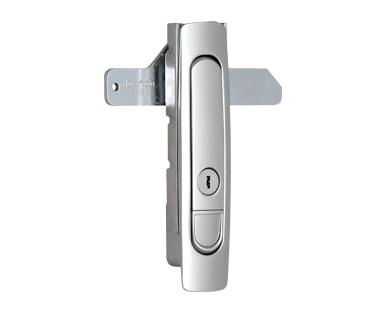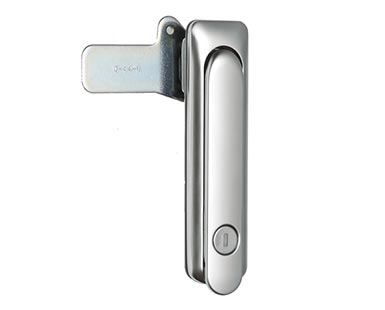contact us
ADDRESS:No. 89, Yezhang Road, Wuqiao Community, Zhuanghang Town, Fengxian District
TEL:021-57407335
E-MAIL:[email protected]
Zinc alloy die-casting personnel must master and understand the characteristics of these materials, and the analysis and interpretation of zinc alloy characteristics are commonly used
1. Overview of Zinc Alloy
Zinc alloy is hard and strong, and it is an ideal substitute for machining, molding, printing,
manufacturing and assembly materials. The table shows the properties of zinc alloys.
Each zinc alloy product has its unique characteristics, so choose the product that best
suits your needs.
Zinc alloy characteristics:
●hard and firm
●High conductivity
●High heat transfer
●Low cost raw material
●Precise and stable three-dimensionality
●Good thin-wall performance
●Good cooling performance, easy to connect
●High quality finished product
●Super anti-corrosion
●Environmentally friendly, recyclable
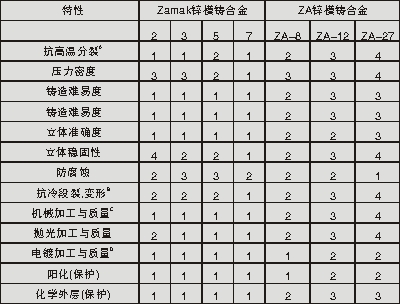
Reference index: 1=highest index, 5=lowest index
A resistance to high temperature splitting.
The ability of the alloy to resist the pressure generated by temperature changes, thermal expansion
and contraction.
B is resistant to cold fracture and deformation.
The ability of alloys to resist deformation, fracture, and bending in low temperature environments.
C machining and quality.
Comprehensive evaluation of cutting, cutting wheel properties, finished product quality and tool life.
D electroplating processing and quality.
The ability of die castings to accept and maintain plating under normal operation.
2. Die-cast zinc alloy
Part structural designers should take into account the creep properties of zinc alloys
mentioned below. These alloys are more resistant to moisture and shock than aluminum
alloys.
NO.1
No. 2 Zinc Alloy
Zinc Alloy No. 2 is also known as Kirksite. It is the strongest alloy of this family. However,
due to the high copper content, it will be accompanied by aging characteristics over time.
This change included a slight increase in volume (0.0014 mm/[inin]) after 20 years, with
reduced extensibility and fill articulation.
Although zinc alloy No. 2 is a good tool material, it is rarely used by die producers. It has
higher creep behavior than other zinc alloys, and it retains high hardness and strength after
aging.
NO.2
No. 3 Zinc Alloy
Zinc alloy #3 is the material of choice for zinc dies and is the most popular zinc alloy in North
America. Its balanced physical and chemical properties are the most desirable, especially
suitable for die-casting molds, with stable three-dimensional shape and anti-aging, which is
why most molds use it as raw material. Zinc Alloy No. 3 has a good finish and is suitable for
plating, painting and chromic acid applications. It is a standard average die casting material.
If higher hardness materials are required, other types of zinc alloys should be considered.
NO.3
No. 5 Zinc Alloy
Zinc alloy No. 5 is the most commonly used zinc alloy in Europe. Due to the higher copper
content, the hardness is stronger, and after losing part of the stretch (continuous extension),
the extensibility is compared with the No. 3 zinc alloy, and its strength is enhanced. This
reduction in elongation, in the second process, will affect the shape of the metal, such as
bending, mortise, swaging, crimping, which should be considered by the designer. Because
the market share of No. 3 zinc alloy is very high, parts engineers usually use No. 3 instead
of No. 5 when strengthening parts. However, if you are making products that require higher
elongation performance, we still recommend you to use No. 5 zinc alloy. Although the creep
indices of zinc alloys No. 3 and No. 5 are similar, zinc alloy No. 5 does have stronger creep
resistance, and both types of alloys are suitable for arc machining. When the temperature
rises beyond the normal ambient temperature, and there are special design requirements for
the structural bearing capacity of the parts, the No. 5 zinc alloy is relatively a better choice.
NO.4
No. 7 Zinc Alloy
Zinc Alloy No. 7 acts as a modification of Zinc Alloy No. 3 to improve die castability, ductility
and surface quality. Most zinc alloy No. 7 is used for metal components, and when the
forming of the mold has special requirements for its subsequent assembly operations, such
as crimping or piling. Stronger die castability, but also suitable for thin wall pressing.
Some molds require stronger die-castability, especially complex and delicate parts, but this
does not mean that it requires special pressing requirements. Accurate die dimensions and
parameters are essential in order to avoid excessive sparks during the splitting and tangent
process. The high-quality elongation of No. 7 zinc alloy is also reflected in the production
process, but it is more reflected in the correction and grinding operation in the second
process.
NO.5
ZA-8 zinc alloy
The approximate aluminum content percentage of the numerical index shows that the ZA-type
alloys are significantly richer in aluminum than the Zamak-type alloys.
Zinc Alloy ZA-8 was originally made for permanent die casting alloys with high quality finish
and plating qualities. It is especially used as a decorative material. Although this alloy is not
as good as other alloys for die casting, it has the best hardness and resistance to
deformation. In terms of chemical performance, the hardness, firmness and deformation
resistance of ZA-8 zinc alloy are stronger than other hot-smelted zinc alloys. This is the
only ZA alloy that can be used for hot chamber die casting.
NO.6
ZA-27 zinc alloy
Due to the high aluminum content of ZA-27 zinc alloy, it can only be used for cold chamber
die casting. These alloys have the highest hardness and the lowest density in the ZA family.
ZA-27 offers the strongest design resistance in elevated temperature environments compared
to other commercial zinc alloys. It also has high load-carrying and wear resistance.
NO.7
ACuZinc5 type zinc alloy
ACuZinc5 type zinc alloy was developed by General Motors. Due to its increased copper
content and reduced aluminum content, its firmness and resistance to deformation have
been significantly improved. The ACuZinc5 type zinc alloy also has a good load-bearing
capacity.
Zinc deformation (elongation under heavy pressure) refers to deformation under a certain
time and pressure. There are generally three levels of deformation:
Class 1 - Deformation at small and progressively lower pressures
Class 2 - Weakest but almost persistent deformation under pressure
Grade 3 - Escalation of deformation under stress, usually resulting in fracture
The deformation level of zinc alloys is a behavior that develops curvilinearly with time.
For example, the deformation-pull ratio is not continuous, even at low tension, and behaves
differently at different time periods, thus causing this continuous curve change, so zinc alloys
do not have a single elastic modulus. number. The withstand force (tension range) under
continuous load is based on the required design tension range (extension force percentage).
The working value of the modulus of elasticity and the range of the tensile force can be
obtained from the graphs of the telescopic deformation test and the metal plate deformation
test of No. 3 alloy at room temperature. Because the deformation values for alloys No. 3 and
No. 5 are close, their graphs apply to both alloys.
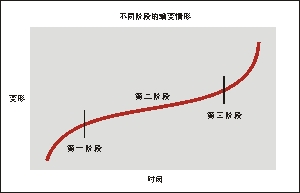
Example: a. If the tension in the design tension range is 0.2% and the required working life is 5 years,
the tension range is 15.1MPa. b. 100 days and 20.7MPa tension produces 0.1% deformation
These data can be substituted into engineering formulas, but it should be noted that they are only
applicable to special bearings in special temperature environments. The instantaneous curve represents
the immediate deformation under applied pressure - returning to its original shape when the pressure is
removed. All other curve changes include this value plus creep to result in total deformation.
As with all alloys, the pressure range is not the only thing that acts on zinc alloys, the operating
temperature can also cause the alloy to creep. The deformation of the first level has little effect on alloy
No. 3, so the deformation of the second level can be used to estimate the overall expansion and
contraction of the alloy, that is, the deformation of the third level under long-term and high-pressure
environments. The deformation, pressure, and temperature relationships of the second grade of alloys
No. 3 and No. 5 are shown in their diagrams, respectively. It should be noted that the first grade creep
behavior of other alloys is also important and should not be neglected.
Zinc alloys are subject to aging, especially at elevated temperatures. Tests have shown that after two
years, the alloy will reduce the creep elongation by 16% at room temperature, under high pressure,
or at 75-95°C for three years. Therefore, a factor of 0.8 should be added to the pulling force range.
Calculated as follows.
Using the data from Alloy No. 3, an increase of 10°C at the service temperature can be used to
estimate the deformation value of Alloy No. 5. For example, the approximate deformation environment
of alloy No. 5 is 10°C higher than that of alloy No. 3.
The following formula can accurately calculate the deformation of No. 3 and ZA8 zinc alloys between
25°C and 120°C:

In the above formula
σ=Maximum tolerable force (Mpa)
T=Temperature (K)
t = working life (seconds)
n=pressure index=3.5
Q=activity energy=106kJ/mol=106kJ/mol
R=gas constant=8.3143x10-3kJ/mol K
C' = constant obtained from the table below
Substituting constants into formulas

The above formula can calculate the comprehensive pressure index, temperature, creep life and pressure index within 50MPa for any creep condition in the range of 0.2% to 1%.
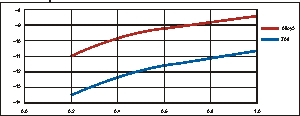
The degree of creep of most alloys is unstable. Even two seemingly identical samples may be different due to their respective creep life (expansion range), so whether it is the data obtained in the test or the formula, one or two additional actual factors are also important. It should be taken into account according to different situations.

 EN
EN  ES
ES RU
RU PT
PT SV
SV DE
DE FR
FR
